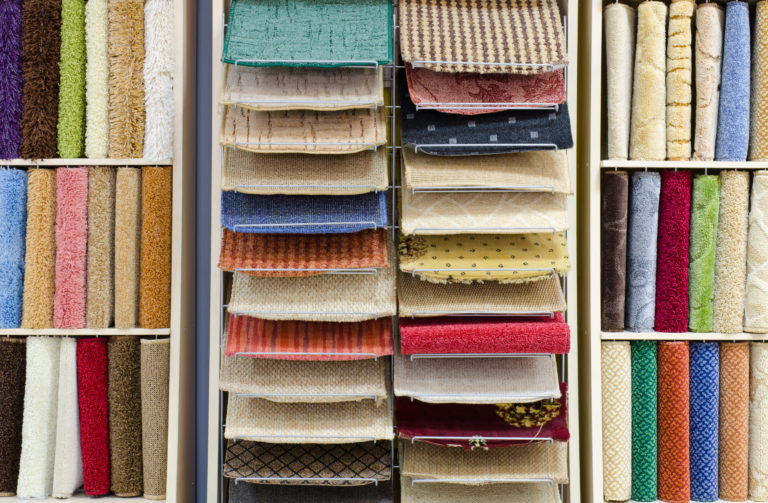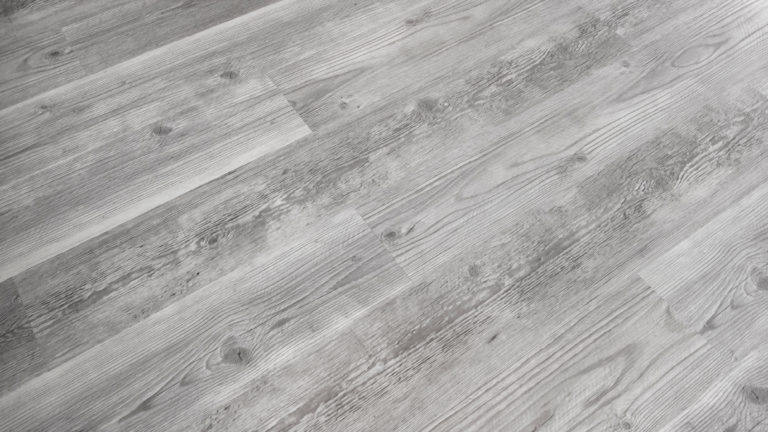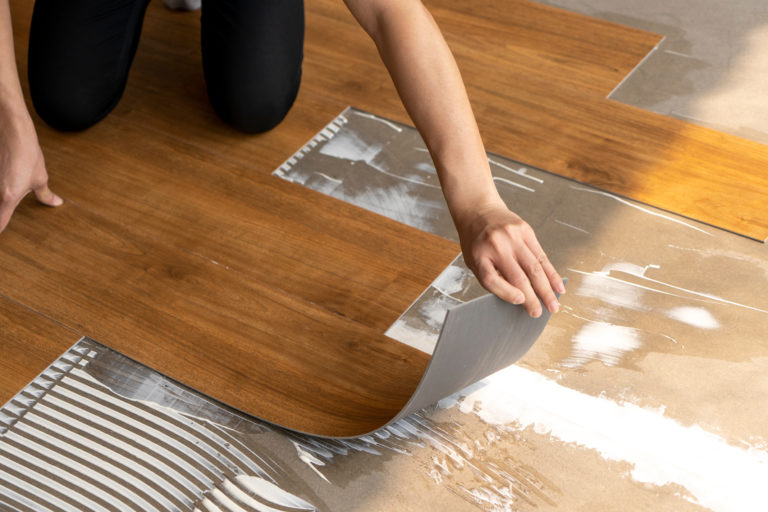This post may contain references or links to products from one or more partners of our parent company and/or subsidiaries of our parent company. For more information, visit this page.
January 14, 2021
Today, we’re going to review everything buyers need to know about one of the most exciting new products in the flooring world: magnetic flooring.
And we’ll save you the suspense by saying this: it’s durable, it’s practical, and we’re really impressed. When you finish reading this piece, we think you’ll be ready to check it out in your local flooring store too.
When you think about it, magnetic flooring isn’t really that far fetched. Who would have thought there would be snap-together porcelain tile flooring? Or that hemp flooring would one day be a sustainable hardwood floor alternative?
The point is, we know there’s a lot of skepticism when it comes to new flooring products. That’s why we’ll dive into everything you need to know about magnetic flooring. How it works, the manufacturers that make it, its pros and cons, how much it costs, and even some FAQs.
Let’s start with the basics. What is Magnetic Flooring?
So what exactly is magnetic flooring? What does it look like? Well, it’s essentially a two-part floor:
- A magnetic underlayment that’s laid over the subfloor (if you’re confused about the difference between an underlayment vs. subfloor, you can read up on it here).
- A normal flooring surface that contains trace amounts of iron, which attaches itself to the magnetic underlayment!
In other words, magnets located in the underlayment attract a receptive layer in the finished flooring. This magnetic attraction forms a secure bond that locks the flooring into place.
What is Magnetic Flooring Made Of?
Here’s the coolest thing—magnetic flooring can be made of anything.
Seriously, anything. Any type of flooring can be manufactured to contain the trace amounts of iron that magnetic installation needs. And some companies offer peel-off iron tabs that can be used to transform regular flooring into magnetic flooring too!
We’re talking laminate, vinyl, carpet, different types of floor tiles—even normal hardwoods like ash flooring. They simply attach small amounts of iron particles to the backing of the plank, and that’s it—they’ll attract the underlayment.
Best Brands of 2024
Magnetic Flooring FAQs
When it comes to new products, questions are natural (and encouraged!). Here, we’re going to answer some of your most common magnetic flooring FAQs.
Is Magnetic Flooring Safe for Your Family?
Yes! We’ll talk about this in more detail later on, but the adhesives used in many flooring products are harmful. Magnetic flooring can be a low-VOC flooring choice because it doesn’t necessitate the use of flooring glue during installation.
Plus, if you opt for something like non-toxic laminate flooring, magnetic flooring can help reduce your family’s VOC exposure tremendously.
Is Magnetic Flooring Safe for Your Electronics?
Another big question many buyers have is about the magnets themselves. Are they strong enough to impact credit cards, computers or other electronics?
The answer is no—the magnets have been tested and will not impact pacemakers, electronics, or anything else in your home—so no need to worry! You can read the full study on Research Gate here.
Are Magnetic Floors an Environmentally-Friendly Choice?
They absolutely can be! Ready to replace your carpet with some different types of wood flooring? With magnetic floors, you can quickly update on your flooring without sending a bunch of materials to the landfill or using any harmful chemicals.
If you’ve been looking into sustainable wood flooring and other eco-friendly options, this is another great choice. With the ability to fix small sections of the floor, magnetic floors will last longer and help save materials from being thrown out.
Where Are the Actual Magnets?
Inside the underlayment. With a system of ultra-thin magnets in a gridlike pattern, this product just gets rolled out on top of your subfloor without any glue or nails required. The heavier weight of the underlayment (about 0.6 lbs per square foot) keeps it in place, so you don’t need to secure it in any other way. Once it’s fit to size, the products will secure themselves as you place them.
What Goes Under the Magnetic Underlayment?
The underlayment can just be placed directly on the subfloor, so this question is essentially just what is subflooring?
How Do You Install Magnetic Flooring?
This product might just take the cake for the easiest flooring to install. With their small traces of iron, all you have to do is set your flooring planks or rolls down and they’ll attach to the magnets in the underlayment.
We’ll talk more about installation below, but these floors are essentially an even easier version of click-together floating floors. No more fitting grooves together! Plus, of the disadvantages of hickory flooring and other super-hard hardwoods is that they can be a hassle to cut and work with. Get them as magnetic planks instead to make it easier!
Will Magnetic Floors Move Around? Are They Stable?
The magnets are strong enough to hold the flooring in place for any foot traffic in the room. When the flooring is installed, it’s cut to size within the space—and that helps keep it in place too.
If you’re looking for the most durable wood flooring, don’t worry—installing it via magnets won’t make it any less durable. It can handle a lot of traffic. Even commercial buildings are installing magnetic floors in high-traffic areas!
Do All Magnetic Floors Work the Same Way?
Each technology is a little bit different, but all of the manufacturers use normal magnets to secure the flooring. Some brands sell tabs that can be attached to any type of flooring to make it compatible; other products have traces of iron already in the backing. We’ll go into the different manufacturers and their options further down.
The Pros & Cons of Magnetic Flooring
As with any flooring option, there are both advantages and disadvantages to magnetic floors.
The Advantages of Magnetic Flooring
Let’s look at a few of the reasons magnetic flooring is one of the most interesting developments in the flooring world.
Magnetic Installation Makes it So Easy to Change Your Floors
What if you have pine flooring and you want to get a puppy? Pine isn’t exactly scratch-resistant flooring, and it’s not the best wood flooring for dogs. Well, if you have magnetic flooring, simply swap it out for a more durable hardwood species like oak!
The point is, you can change your floors whenever you want. You can remove and store your floor planks or carpet without damaging them, so there’s no reason not to try a bunch of new floors!
Want a soft surface but put off by the disadvantages of cork flooring (like its lack of water-resistance)? Get magnetic floors. You can have cork when you want it, but swap it out for something more waterproof when you don’t. Win-win.
There Are Tons of Magnetic Flooring Options
Like we said earlier, you can get just about any type of flooring you want in a magnetic installation. Even fake wood flooring options like RevWood and porcelain wood-look tile! Carpet, ceramic, vinyl plank, LVT, laminate, you name it.
Think of it this way: if you’ve been debating between putting in carpet vs. laminate, bamboo flooring vs. laminate, or heck, even tile vs. wood floors, you can literally get them all. Switch between them every month if you like! It’s that easy to change.
You Can Change Your Flooring Seasonally or for Your Needs
Because magnetic flooring is so easy to put in, it’s incredibly easy to update it as often as you want.
Say you want hardwood mudroom flooring in the summer, but vinyl for when it gets rainy and wet outside. Get them both! You can swap them out seasonally!
Debating between carpet or hardwood in your bedroom? Just put in the magnetic underlayment and you don’t have to choose. Hardwood for the summer and cozy carpet for the cooler winter months. You don’t have to worry about the cost to replace carpet with hardwood because you won’t ever need to truly replace either one.
Magnetic Flooring Works on Backsplashes, Walls, and More
Magnetic flooring technology isn’t just for floors—it can be used on walls for backsplashes, too! A different wood floor design and a different backsplash pattern every month or two? Yes please.
Repairs Are Incredibly Easy
Difficulty of repair is one of the biggest disadvantages of both traditional and floating floor installations. Pulling up planks that have been nailed or glued down without damaging their neighbors is difficult.
And what is a floating floor? It’s a surface that clicks-together tightly and rests (or floats) on the underlayment or subfloor below. That means it’s quick and easy to install, but it also means that to repair any damaged planks, you have to disassemble the whole floor—from the wall, all the way to the plank in question.
In fact, we’ve included this issue in our articles about the disadvantages of vinyl plank flooring and the disadvantages of engineered wood (because both of these surfaces are often installed as floating floors).
With magnetic flooring, you simply take the plank up with a suction cup.
It’s Incredibly Unique
This one is a bit more subjective, but hard to argue with. The fact is, magnetic flooring is incredibly unique. So you feel the need to keep up with the Joneses—or that obnoxious neighbor down the street—be the first one on the block to change your flooring seasonally.
Neighbor bragging about their new ebony flooring (that’s actually ebony-stained oak)? That’s cute—you’ve got the best engineered wood flooring on the market. And solid Douglas fir flooring. And EVP flooring. Take that, Linda.
The Disadvantages of Magnetic Flooring
Of course, there are some downsides to magnetic flooring as well. Here are a few of the most common cons:
Magnetic Flooring Isn’t Widely Available (Because It’s Still So New)
One problem with being a trendsetter is that you’re working with fewer options. Because it’s so new on the market (only a few years old), you won’t find magnetic flooring lining the aisles of big box stores next to the best hardwood floor brands.
That said, you can definitely check with some flooring stores near you to see what they have. It’s worth noting that local retailers can track down and source products from other dealers—so if they don’t carry something you want, they can still get and install it for you! Good luck getting that kind of service at a box store.
Magnetic Flooring Shares Some Floating Floor Disadvantages
There are some disadvantages of floating floors, mostly related to sound amplification and humidity. And while magnetic flooring isn’t exactly the same as a floating floor, it does share these issues.
Both of them come down to the space between the flooring and the subflooring—meaning that using an appropriate underlayment can largely mitigate the problems.
It May Be More Expensive Than Other Installation Options
Your price point for magnetic floors may be higher than for some other flooring choices. Because of its rarity, magnetic floor materials may cost more.
However: if you’re comparing the price of putting in magnetic flooring to the cost to install engineered hardwood floors, consider this: your installation cost for magnetic flooring is a one-time expenditure. But with a traditional installation method, you’ll have to pay to replace that flooring again in the future.
How Does Magnetic Flooring Compare to Other Types of Flooring Installation?
Let’s take a quick look at how magnetic flooring compares to some more traditional installation techniques.
Magnetic Flooring vs. Glue-Down Floors
Whether you buy low-VOC vinyl flooring or low-VOC carpet, you won’t get a truly non-toxic floor if you use conventional flooring glue. Sure there are some low-VOC flooring adhesives, but if you don’t ever want to deal with the issue, opt for magnetic flooring instead!
Magnetic Flooring vs. Click-Together Floating Floors
If you’ve looked into the differences between vinyl plank vs. laminate, you’ve probably read a little bit on floating floors. Magnetic flooring is very similar to a floating floor—but instead of attaching to an underlayment, floating floor planks simply snap together with each other.
Practically speaking, the biggest difference between the two is that magnetic flooring allows you to pull up and replace single planks without taking apart the whole floor.
Magnetic Flooring vs. Staple-Down or Nail-Down Flooring
While hardwood is the floor most often installed as a nail-down surface, it’s by no means the only one. Many carpets are installed using tacks and glue; even some types of laminate are stapled down. The point is, this type of installation is much more time-consuming and less versatile than magnetic flooring.
Who Manufactures Magnetic Flooring? What Are the Best Magnetic Flooring Brands?
There are 3 main companies leading the magnetic flooring game. We expect this list to grow over time as the floor’s popularity increases, though—especially with more and more people on the hunt for eco-friendly flooring.
MagneBuild by Magnetic Building Solutions
This game-changer was created by Magnetic Building Solutions (MBS) and launched in January 2019. Their product was one of the first of its kind to be introduced to the flooring industry. MagneBuild creates a magnetic underlayment system for flooring and other surfaces, just like we described above.
Attraxion by Metroflor
Metroflor is one of the biggest and best vinyl plank flooring brands around. And they were the first to go all-in with magnetic flooring.
Attraxion is a LVT / vinyl plank product that works with MagneBuild underlayment. It’s durable, water-resistant, and low-maintenance. You can also find it in a variety of styles including different wood floor patterns and choices that look more like tile than laminate.
IOBAC Magnetic Flooring System
IOBAC is the third main name you’ll find in the market for magnetic flooring. They do a lot of commercial work getting these floors out to the retail and hospitality sectors. Their technology not only allows products to adhere to the magnetic underlayment they use, but they also have a product called MagTabs that can be adhered to any tile product.
Ask Your Local Flooring Store About Magnetic Flooring!
We hope this full review of magnetic flooring has been useful for you! We’re so intrigued by the idea of easily-swappable flooring—especially in light of the expert installer crisis currently affecting the flooring industry.
Either way, magnetic floors offer a ton of versatility. They’re available in tons of different materials from water-resistant wood flooring to Berber carpet, and they offer an easy, environmentally-friendly flooring installation technique. All in all, we’re a fan.
So: when you’re ready to start browsing, find a flooring store near you or search the FlooingStores.com catalog to see what magnetic flooring options you have to choose from.
And don’t forget to read up on:
- The Pros and Cons of Cork Flooring
- The Best Cork Flooring Options & 11 Reasons They’re Awesome
- Linoleum vs. Laminate vs. Vinyl: Differences, Pros, & Cons
- Is the Cork Flooring Lowes Sells Actually Worth Buying?
- Can You Refinish Bamboo Flooring? Here’s How
- Parquet Flooring: The 2022 Guide
- Laminate vs. Hardwood Floors: Which are Better?
- What’s the Cost to Install Vinyl Plank Flooring?
- Teak Flooring Pros and Cons
- Pergo Reviews 2020: What Buyers are Saying
- Hickory Flooring Pros and Cons: The Guide
- Engineered Bamboo Flooring Pros and Cons
- A Guide to Peel-and-Stick Carpet Tiles (& 9 Reasons They’re Amazing)
About The Author

Steph Gregerson
January 14, 2021
Steph is a book nerd, rule follower, and pizza lover who can't get enough of playing outside. She was raised on the ice rinks of MN and currently resides in sunny San Diego. As a freelance writer, she loves research, producing content, and organizing information for a wide variety of clients. She currently has at least 10 browser windows open at all times.





